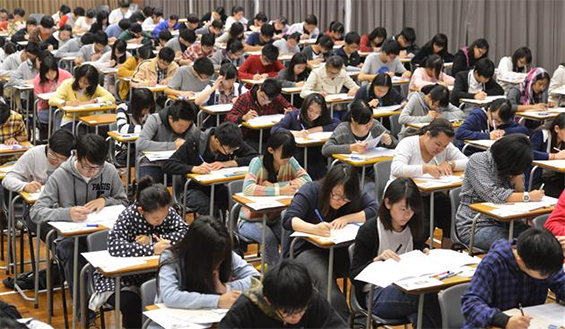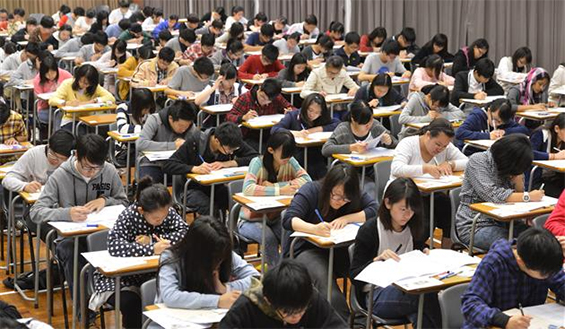
A document released for public consultation has caused controversy in Hong Kong after stating that students should be able to read simplified Chinese so that more material is available to them, fueling the latest debate over Hong Kong’s education system and ties to the mainland.
The document was released in December by the Education Bureau’s Curriculum Development Council, though the controversy didn’t begin until this month. However, the Bureau later said that this is not an item for discussion for this consultation, and that this guideline has been in existence for a decade.
The Bureau’s Curriculum Guide has suggested the introduction of simplified Chinese to primary schools since 2002, reports Danny Mok and Peace Chiu of the South China Morning Post.
It reads:
Students should have the capability to recognize Simplified Chinese characters, after they secure the capability of recognizing Traditional Chinese characters. This is so they can expand their reading spectrum and strength communications with Mainland China and overseas.
Supporters think that this will help the next generation better understand mainland Chinese writers. Those who disagree with the guideline feel that this is another example of the mainlandization that Hong Kong has suffered, and another move to try to integrate the territory with mainland China. They want to protect Cantonese culture, beginning with its language systems.
Many are saying that Chinese imports like streaming video programs with Simplified Chinese subtitles are enough of an education for these students.
According to education lawmaker Ip Kin-yuen, people in Hong Kong are only now noticing the guideline due to a greater public awareness of issues surrounding mainlandization.
Ip personally feels that simplified Chinese would confuse children. He said:
It is too early to teach simplified Chinese characters in primary schools in which the children are learning traditional Chinese characters. They would be confused if they were also taught simplified Chinese at the same time.
Associate Professor Tse Ka-ho of the Hong Kong Institute of Education’s Department of Chinese Language Studies agreed with Ip:
I would rather that they just learn the traditional script first, then the simplified one later, say in Form Two. When they first start to read the simplified script, they might not be used to it. But after a while, reading is not an issue.
According to Professor Tse Shek-kam, an expert in teaching Chinese at the University of Hong Kong, the students would learn Simplifed Chinese on their own beginning after primary five. He said:
They can learn it just by reading, there is no need to teach it.
Fung Pik-yee, vice-president of the Hong Kong Professional Teachers’ Union, noted that schools would probably still teach in Traditional Chinese characters. She also reminded teachers to read the consultation questionnaire carefully, since this suggestion actually combined a few distinct suggestions.
The public consultation ended on February 15th, writes Kris Cheng of Hong Kong Free Press, and many struggled to make sure their voices were heard before the deadline.
Hong Kong’s students are mostly native Cantonese speakers and see Traditional Chinese characters in their daily life.
Simplified Chinese was introduced in mainland China in 1956 by the Communist Party, writes SC Yeung of Ejinsight. They’re simplified versions of the Traditional characters, with fewer strokes.




